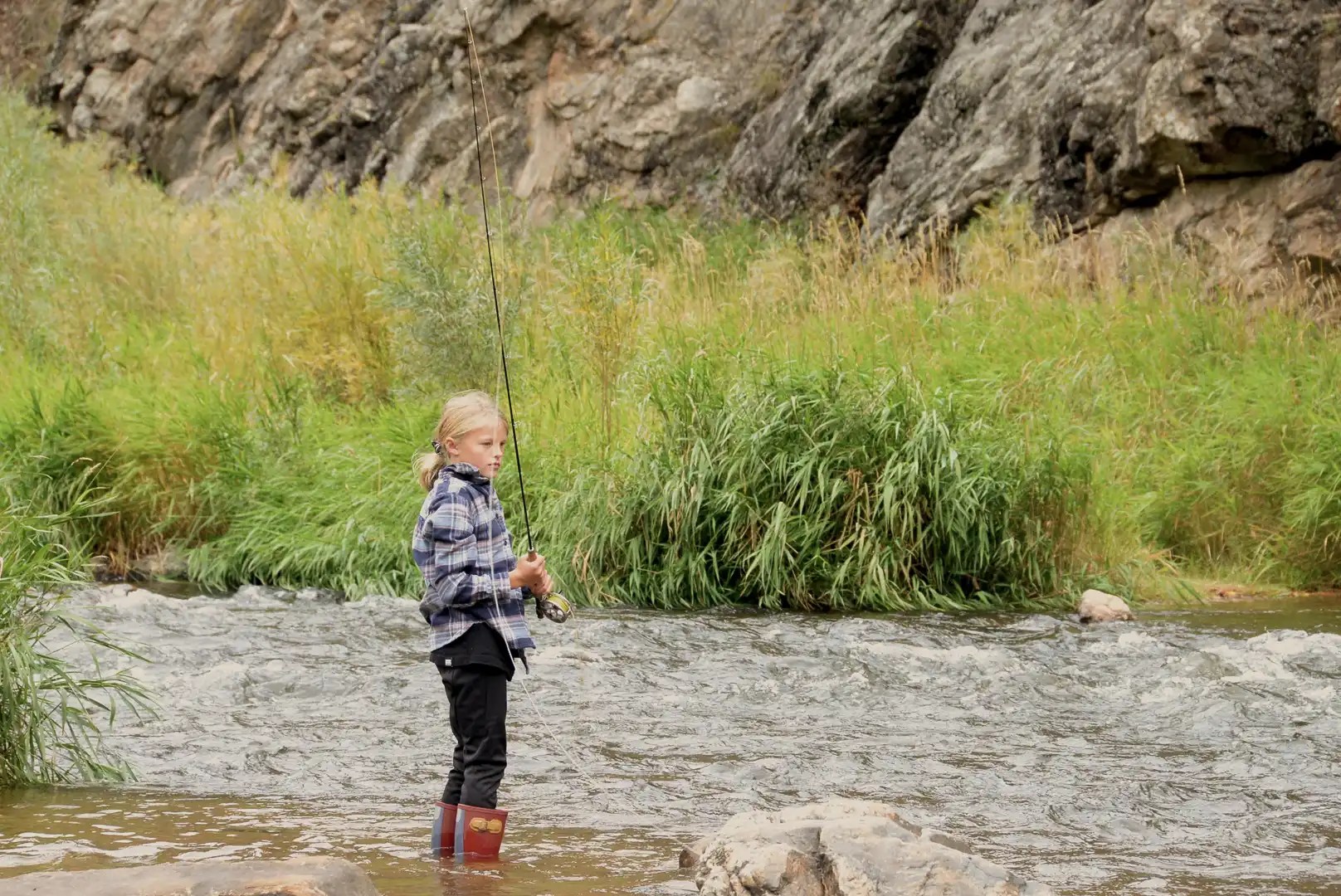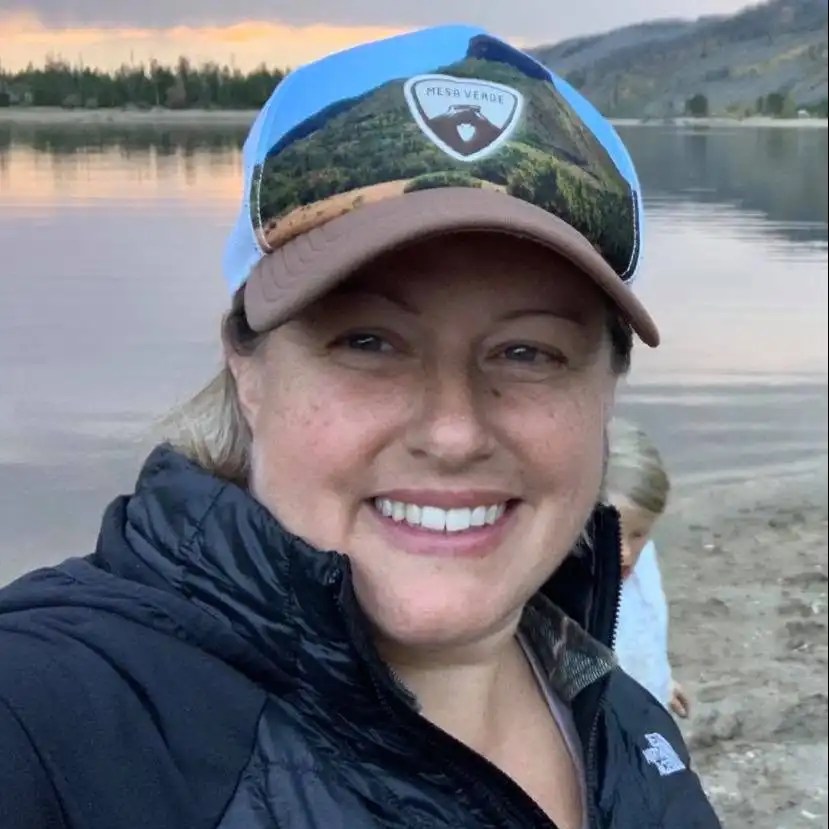
Fall is one of the best times to fly fish in Colorado. The splashes of fall color, cooler temperatures and lack of crowds make autumn fly fishing a memorable experience.
Water tends to be clearer, and there is more opportunity to catch bigger fish that are beginning to spawn and/or migrate.

Both Boulder Creek and Big Thompson River are prime spots for fall fly fishing. Fly fishermen in the Front Range have easy access to prime angling opportunities within an hour from home. Twenty-two or so species of fish can be found in the reservoirs and tributaries that flow in and out of the creek and river, from Colorado native fish such as green sunfish and sand shiners, to non-native fish such as trout and yellow perch. The Big T is mostly known for brown, rainbow, brook and cutthroat trout.
Most fish in the Boulder Creek system and along the Big Thompson River are on the smaller side (less than 12 inches), and light rods (like 3 to 4 weights) are often great options. Fishing in Boulder Canyon and Big Thompson Canyon is catch and release.

Our fall fly fishing excursion began after school on a Tuesday. We met up with an old friend who happens to be an incredible fly fisher, having grown up fishing Boulder Creek and Big Thompson from about the age of 10 or 11 on. We made the drive up Boulder Canyon to a prime spot. Clouds rolled in, the wind picked up, and rain began to fall. Admittedly, we don’t have great gear for fall fly fishing (no waders). With the cold temps, my daughter ended up shivering and very cold. We called it a day after about 40 minutes, coming home to learn that she had a fever.
After a quick virus, my daughter was feeling better within 24 hours. We made a new plan to meet Sunday afternoon up in Big Thompson Canyon to give it another try. There are secret stashes and great pockets of water where you can find higher populations of fish along the river. Many of these were created when a 100-year flood in September 2013 caused extensive damage and major changes to the Big Thompson River. The river has not been restocked since the ’90s.
The Big Thompson River begins at Rocky Mountain National Park in Forest Canyon and runs through Estes Park. It feeds into Lake Estes and continues through Big Thompson Canyon, ending in Loveland, Colo. Year-round snowmelt continually feeds the freestone stream of the river, with the water flowing over shale, sandstone and even crystalline rocks.
Fishing is great year-round on the Big T. In October, the caddis hatch brings great opportunity for excellent fishing conditions. Nymphs and dry flies work basically year-round. We met our friend at 1:30 at a park within Big Thompson Canyon. The park is mostly used by picnickers and sightseers. On weekdays, you may be the lone angler there. The weekends see pockets of fly fishers all day long.

Before making a game plan, we checked the water flow and weather conditions. There was a threat of rain again, so we overpacked extra gear in case we needed to change our gear midcasting. Our friend got there ahead of us and spent some time trying to figure out what dry flies and midges were working the best. She hadn’t had much success when we pulled up, so we approached the experience with the mentality of having to try some casts, change positions every so often and try again, perhaps with a new type of midge.
Overcast skies and a slight breeze greeted us. The air temp was just perfect for fall fishing, around 70 degrees. The threat of rain had many fishermen packing up and heading out before we came. We started west of the bridge off Highway 34, the main artery through the canyon. Fly fishing is a game of patience, and this afternoon’s casting was no different. Casting upstream, we spent about 20 minutes or so moving upstream, casting over and over.
With private property on the opposite side of the river, we could only wade to about halfway across. This limited our spots to cast from, so we kept most of our casting to a foot or so from the shoreline. We could see trout rise to the surface to check out what my daughter was throwing, but nothing was really grabbing. One little bugger, as our friend affectionately called him, bit down but managed to get off the line as my daughter pulled the rod up.

With a little bit of excitement, and a bit of a second wind, we moved upstream again. The banks of the river are thick with vegetation, causing the line to get a bit snagged when my daughter overdid it with a backcast. It was an easy enough fix, but a few casts later, the dry fly and midge broke off and headed downstream.
It took some time to repair the line and add a new fly and midge. Hoping for better luck, we headed under the bridge for a vegetation-free casting area. Plenty of flood debris remains in the water at this spot, creating pockets where fish may be active.
We weren’t getting much in the way of trout even looking at what we were throwing, so we continued a slow move upstream away from the bridge. The clouds continued to blanket the sky, and the wind had all but died completely down at this point. The afternoon storms they forecasted could not be found.

With the faster-moving water, casts and drifts were shorter. Our friend even helped my daughter practice the all-important “high stick” when fishing in the pockets. We still didn’t find a fly that produced anything, so a quick change was made riverside. Even using thin tippet wasn’t helping our luck on this day.
My daughter had one last snap on the line, but the fish got away. I’m not sure how fishermen define a successful day: one when you truly net a fish or a day when you have some bites but learn more skill-wise. Mending the fly line, swinging the nymph at the end of the drift and more techniques are some of the things to work on during our next fly fishing excursions.
They call it fishing and not catching for a reason, and this excursion was a prime example of that. While we didn’t net any fish, we were still able to enjoy this gem of a fishing spot relatively close to home. The weather held for us. Splashes of fall color dotted the landscape, and the peacefulness of the trickling river was the perfect end to the weekend.

Heading home through the canyon, we saw a flock of bighorn sheep near a pullout. We stopped to grab a few photos before heading back on the road. A quick pit stop at the Colorado Cherry Company to grab an apple pie detoured us for a few minutes, but it was worth it. Fresh apple pie is enough to make anyone feel better about not getting a fish in the net.
With some better schedule juggling, and some changes of priorities, we plan to add a few more fly fishing jaunts to the calendar next year. It’s kind of a no-brainer when we have such easy access. While my daughter has landed many fish bait fishing, she has yet to catch one fly fishing. With more casting practice and a little more luck, maybe she will finally net a fish next year.





